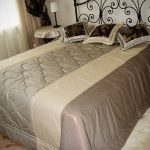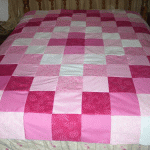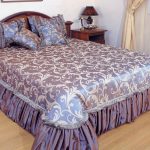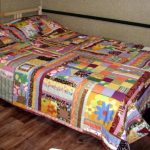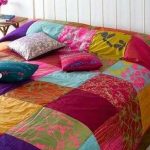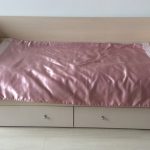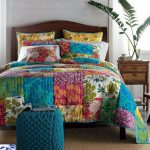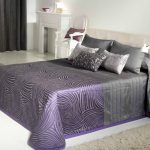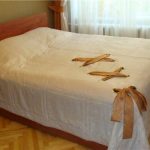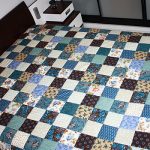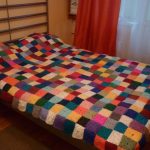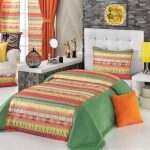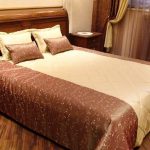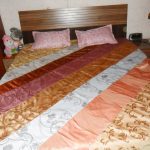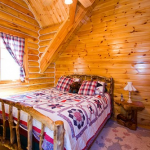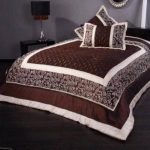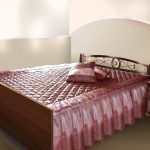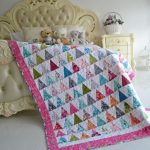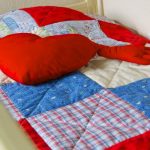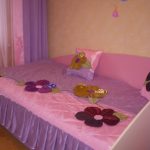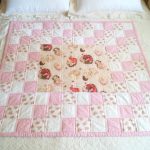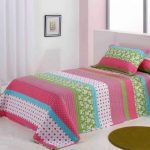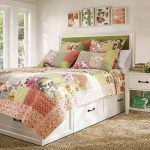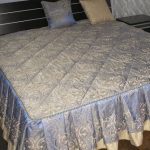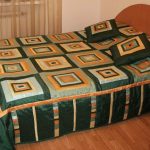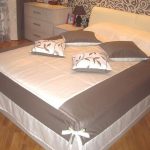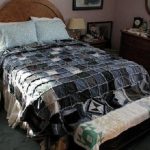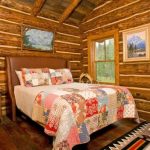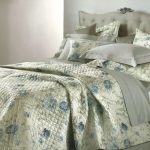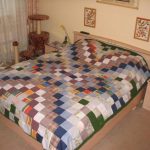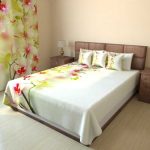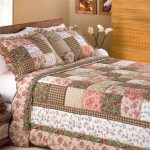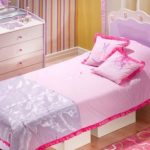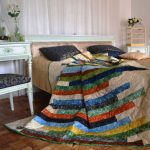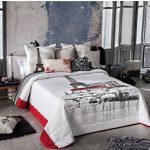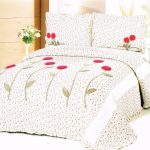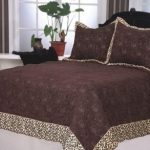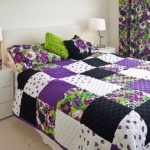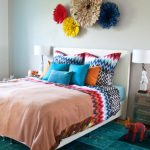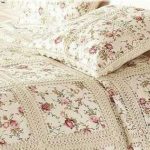How to sew a blanket on the bed
There is a huge selection of finished products in stores, but it is difficult to find the perfect option for the design of the room or embodying a fully conceived solution. You can contact the studio or do it yourself, given the low complexity of creation. Such a product will cost less, will give a feeling of satisfaction from the realization that it is done by hand. To figure out how to sew a blanket on the bed with your own hands, it is enough to have a basic knowledge of the pattern and be able to sew, and follow the tips.
Content
- 1 What material is best suited
- 2 How to choose the right size
- 3 How to make a pattern bedspread
- 4 What techniques exist
- 5 How to sew a quilted bedspread yourself
- 6 Features and secrets of patchwork style
- 7 How to decorate a bedspread with a frill
- 8 How to add to the bedspread ruffles
- 9 How to handle the edge of the blanket without frills
- 10 How to care for a veil
- 11 Video: I sew the bedspread itself on the bed
- 12 Photo gallery of beautiful hand-made bedspreads:
What material is best suited
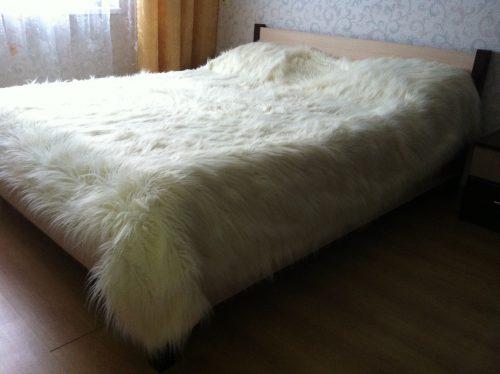
Covers of natural or faux fur are suitable for certain styles in the interior, are quite difficult to maintain.

Silk cover, very delicate and suitable for Oriental-style interiors
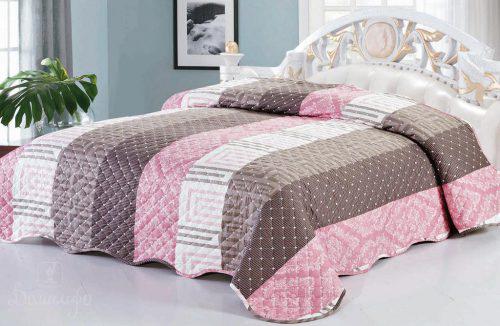
Natural cotton bedspreads are very popular and do not require special care.
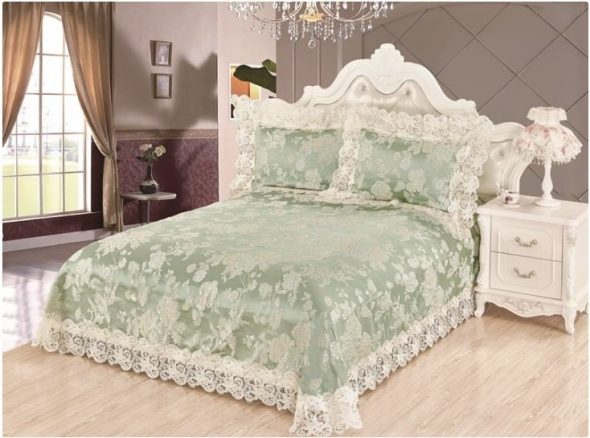
Jacquard cover with lace will help decorate and transform your bedroom
When choosing a fabric, you should first of all consider the design of the room and the materials of the textile interior design of the bedroom. Many people like to use different options for the warm and cold seasons. Each matter has its advantages and disadvantages, which should be considered when creating a blanket with your own hands.
| Material | pros | Minuses |
| Fur |
|
|
| Silk |
|
|
| Cotton |
|
|
| Jacquard |
|
|
| Atlas |
|
|
| Tapestry |
|
|
| Bamboo cloth |
|
|
| Acrylic |
|
|
| Viscose |
|
|
| Microfiber |
|
|
| Fleece |
|
|
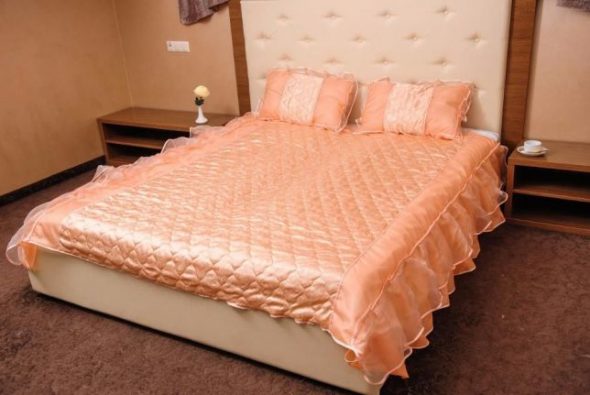
Peach satin cover on the bed with ruffles on the sides
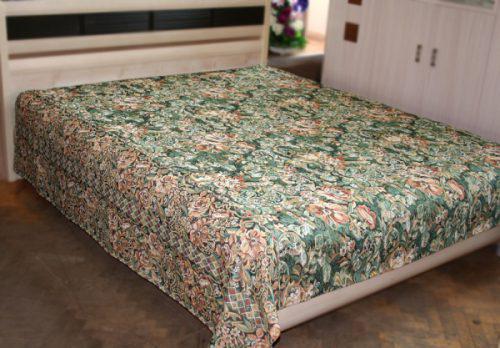
Drawing and patterns on the tapestry bedspread are of great variety, so you can choose the appropriate option for any interior
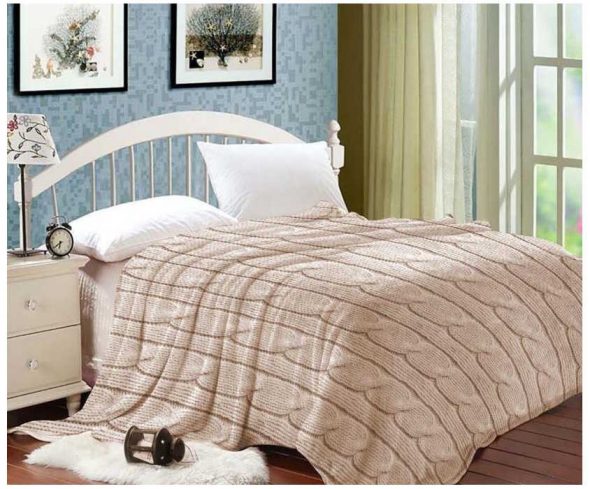
Bamboo blanket fits into a house where children or allergen sensitive people live
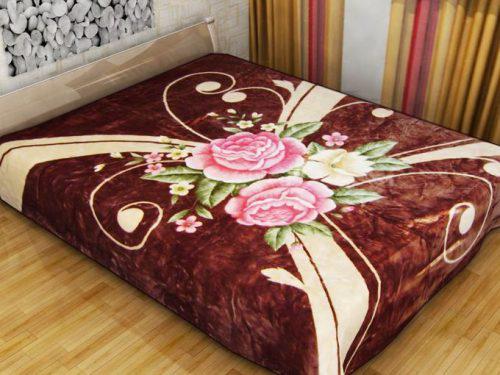
The cover on the bed of acrylic is soft to the touch, not electrified, light and warm
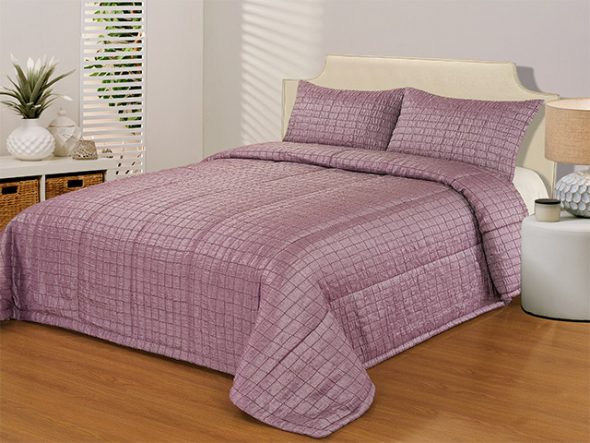
Lightweight quilted viscose bedspread

Microfiber beige bedspread for Art Nouveau bedrooms

Winter fleece blanket on the bed with phlox
How to choose the right size
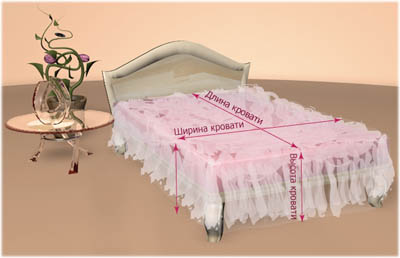
The calculation of the required size of the bedspread is carried out according to the main parameters.
Determination of the correct size of the material used for bedspreads depends on the dimensions of the bed, the model and the creation technique. First, three dimensions are measured: the width, length and height of the bed. It should be borne in mind that there should be free space between the bedspread and the floor - this not only saves the thing from unnecessary pollution, but also visually increases the height of the bed. When determining the size it is worth doing allowances of one and a half to two centimeters - in any case, a little fabric will be spent on the seams, and the measurements may not be entirely accurate. Also take into account the features of the bed, if there are backs or other features.
The simplest version of the model is a rectangular product. For this option, it is enough to add twice the height to the width, on which the bedspread will cover the bed on the sides. In the same way increase the length. After finding out the dimensions, it is worthwhile to choose the right material, it is desirable that its width coincides or be greater than the width of the product. To determine the length of the fabric for the edging, multiply the measured value by 1.5. After determining the dimensions of the bed and the choice of the model, it will be possible to begin creating the pattern.
How to make a pattern bedspread
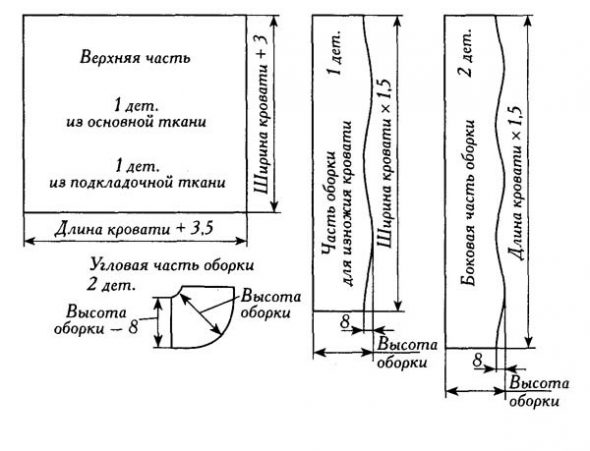
Pattern bedspread on the bed according to individual sizes
For beginners, it is better to choose fabrics that are simpler, for example, cotton, with a monochromatic color or a repeating pattern. Silk or satin are suitable for experienced needlewomen. They require special care, as they are easy to spoil. Their cost is much higher than other fabrics.
Important! For the pattern you need to prepare a flat surface and in any case not to cut the fabric on the weight.
For a bedspread with a lining, its pattern is made in a similar way with the main parts and combined with a stitch. When creating a stitch pattern, calculate the values so that it starts and ends at the edge of the product. For starters, it's easier to draw and count everything on a piece of paper, and then transfer it to fabric
Tip! For frills, you can use the remnants of tissue, the main thing when cutting to make a cut in one direction.
What techniques exist
Because of the huge variety of matter, patterns and ways of sewing, there is a large selection of techniques for creating a blanket with your own hands.
The easiest option is a rectangular cloth cover. You can decorate it with fringing, ruffles, fringe, tassels. You can also choose a fabric with a pattern, or add embroidery.
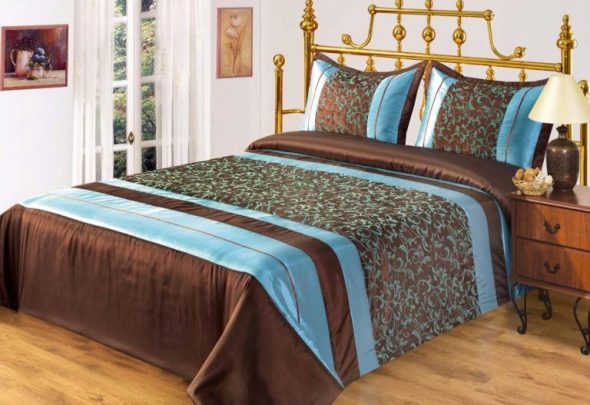
Spathe on the bed of several combined multicolored fabrics
Quilted bedspread - usually made with a lining of padding polyester, which is sheathed on both sides, the material for the front part and the substrate, you can choose any.
Three layers are combined and stitched according to a pre-selected pattern.
Also on sale is already ready quilted fabric, from which it is even easier to sew the finished product.
The patchwork bedspread is made of relatively small rectangular or triangular pieces of fabric that are sewn together.
Perfect for country style country or provence. This blanket made of rags with drawings will look great in the nursery.
The cover with puffs looks very impressive, but it requires experience and long fine work from the needlewoman. Poufs are folds on the fabric, which are obtained thanks to the gathered stitches in a specific pattern. For work usually use beautiful expensive fabrics like silk.
How to sew a quilted bedspread yourself
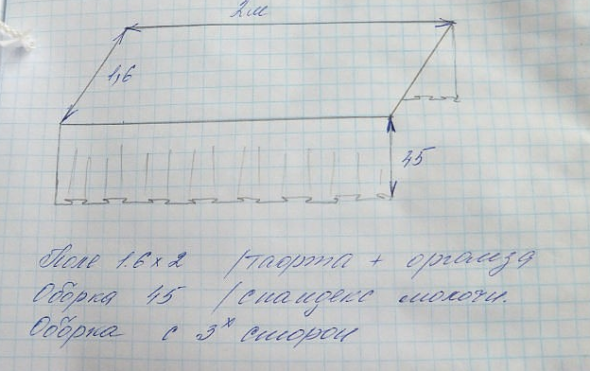
Quilted bedspread assembly scheme
Before starting work, it is necessary to prepare the fabric for the frontal part, the filler, the material for the reverse side and the thread that matches the color of most of the fabric, if the goal is not to make contrast stitches.
When working is to adhere to the following order.
- Choose stitches pattern, and calculate the sizes on paper.
- Lay the lining face-down, the filler and the main fabric face-up together. Line up the stitches with soap, chop layers with pins or sweep.
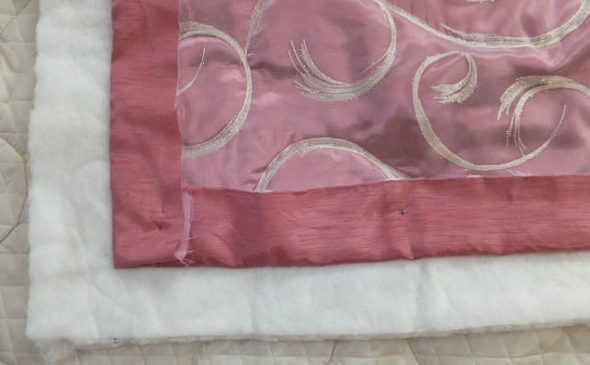
Anchoring of three layers of fabric - satin, patterned organza and sintepon
- Then he stitches the machine along the planned lines, and it is better to do this from the center to the sides, so that the fabric does not gather and the lining material does not get off.
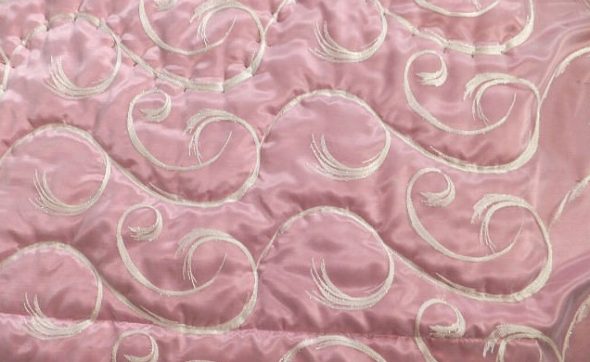
Quilting bedspread according to the picture
- To complete the work and give a better image of the edge you need to process. To do this, you can sew ornaments from the ribbon or ready-made lace, fringe.
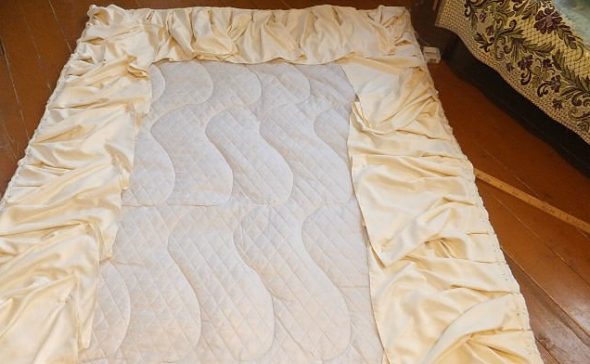
Making a frill for our bedspread
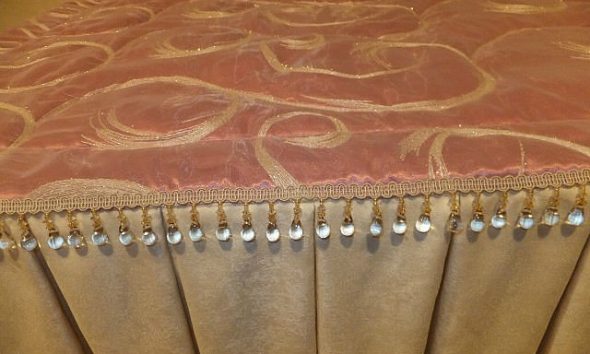
Close the frill with a cord or tape and get the finished cover
Features and secrets of patchwork style
Style is a product made from shreds of fabric. The cover with your own hands in this style is most easy to sew, especially for this you can use patches of old clothes or other things. For a start, you can practice and sew something for a child's room - it is smaller in area and it will be easier to do. For tailoring you need to follow the following steps.
- First you need to choose the shape and size of the patches - they can be the same or different, but they must be folded into a rectangular shape. Rectangular patches are more convenient to use. It is better to first outline the tailoring pattern on a piece of paper - this will help determine the size, shape and number of patches.

Lay out the scraps for the bedspread in the right order.
- For patches of the same shape and size, it is worth preparing a piece of cardboard, adding seam allowances. Circle the pattern and find the previously calculated number of elements.
- Next you need to sew the shreds together. Do this by folding them face down to each other, fasten with pins and stitch along the edge. Triangular elements are better sewn into squares first.
- The stripes collected from squares are put together on a typewriter. Thus it turns out the front side. If desired, you can make the bedspread two-sided, then the substrate is sewn in a similar way.

We fasten the layers of individual patches
- The lining, padding polyester and base are folded together and joined with basting stitches. After that, the layers are stitched along the stitches on the sewing machine, trying to keep the fabric from gathering in the folds and not losing the filler.
- Edges are processed in any convenient way: a bias tape, frill or fringe is sewn.

Patchwork finished bedspread
Council It is not necessary to make flaps square, contrasting triangles or stripes look very good. You can make squares of stripes and stitch together in staggered order so that the stripes are perpendicular to each other.
How to decorate a bedspread with a frill
For bedspreads with frills, the main part can be made quilted on your own or purchase one that is already ready. Satin monophonic fabric is well suited for this. To determine the required consumption of matter, you need to collect the band into the folds of the desired shape and depth, until the length of the resulting frill reaches a meter. Align the fabric and measure the length that is spent per meter. Multiplying the length of the perimeter of the edges of the product selected for decoration, the calculated coefficient will get the desired length of matter. For a bed with a back decoration is sewn only from three sides.
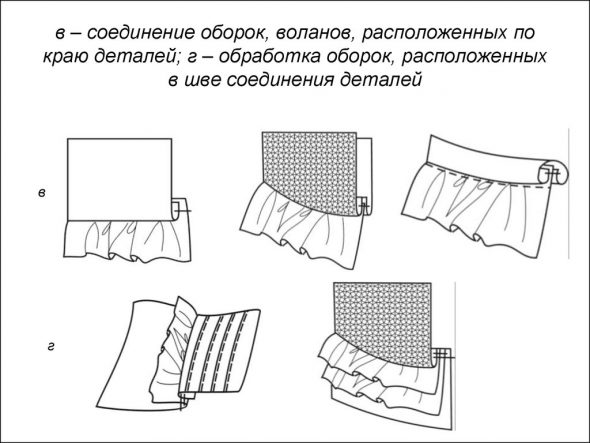
Ways of sewing ruffles and flounces along the edge of the details and in the seam of the joint
Cut the strips of the required length for each side of the bedspread and sew together. Then, tuck the bottom element of the ribbon and sweep over the overlock. After that, you can collect and stitch the folds. Finished decoration sew to the main part of the product. It is possible to fix and decorate at the same time with the help of bows - this will add some pomp to the bed.
How to add to the bedspread ruffles
The edges of the main part of the bedspread should be prepared - bend and hem them. Then you can start creating ruff to decorate the edges:
- Prepare strips of fabric for future ruches and stitch them together as necessary to achieve the required length.
- Sweep the edges of the tape with the help of an overlock or zigzag seam.
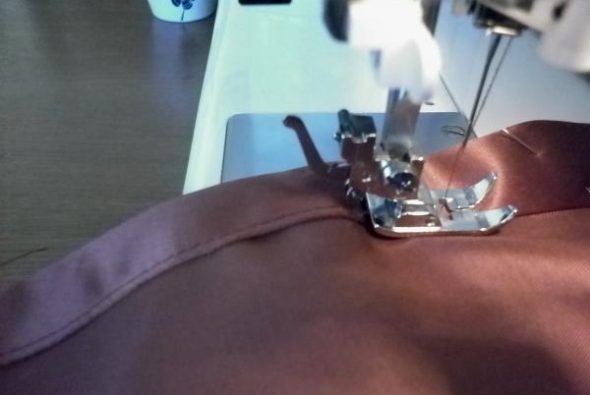
Stitching the bottom edge and side cut frills
- Stitch the resulting billet along the center. You can also move the seam towards the edge to get an asymmetrical version of ruff.
- Collect, tightening the fabric of one of the stitches of the central seam and leveling the shape and depth of the assembly waves.
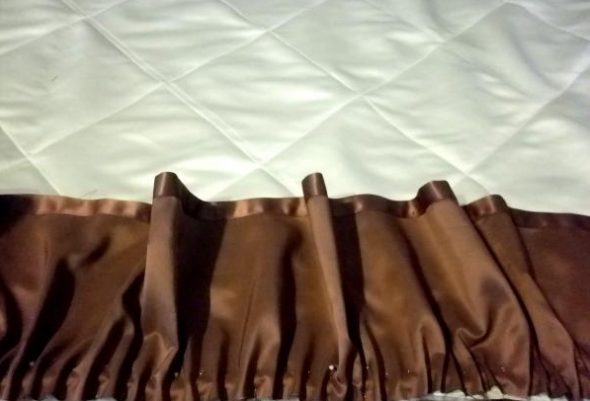
Make a frill and fasten it to the bedspread with pins.
- Mark the location of the ruches on the bedspread. In the case of finishing one corner, you need to mark the arc, starting from a smaller one. At the same time between ruches should be a distance equal to their width or even slightly less.
- Attach the finished ruffles to the marked bands with a central seam, pin with pins and stitch on a typewriter.
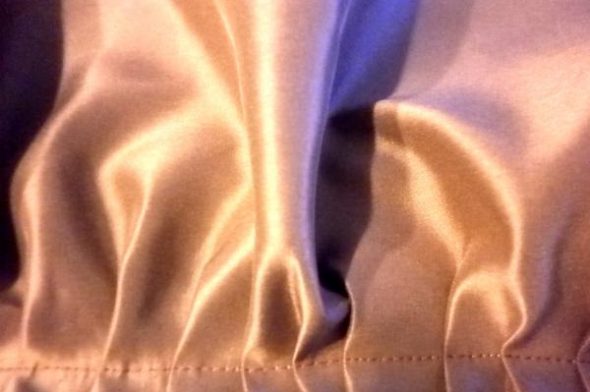
Lay the binding line at a distance of 1 cm from the cuts
How to handle the edge of the blanket without frills
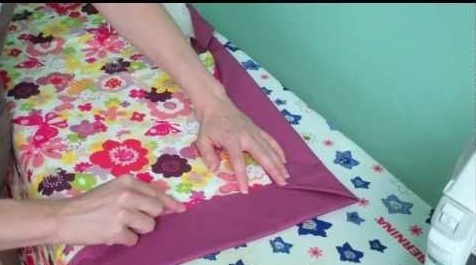
Edging the bedspread edge without ruffles and frills
If you do not want to spend time or matter on the frill, then the edges need to be further processed. This can be done in various ways.
- Sew a blanket around the perimeter with a secret stitch. This option is suitable for quilted bedspreads. However, this may slightly suffer the appearance, because it is not always possible to make smooth seams, especially for beginning needlewomen.
- Make the edging tape. Another simple option that also helps to hide some of the irregularities of the edge, if any. To do this, take a satin or silk stripe with a width of about 10 centimeters. Then it is applied to the edge and bent in half so that the edge of the tape is on the opposite side of the coverlet, and it covers the edge. Tape swept up and then strapped with a typewriter.
- Handle the gate. At the same time, the edges are turned 1-1.5 centimeters from the front side to the inside and stitched on a typewriter. This method is suitable for single-layer covers from dense fabrics.
How to care for a veil
In order to preserve the colors and shape, to increase the service life of things you need to properly take care of them. When caring for a bedcover, the following rules should be followed.
- The first step is to follow the rules for the care of the material that is selected for sewing.At the same time, if a thing consists of several types of fabrics, then it is necessary to choose the mode of washing or processing according to the most demanding area.
- To get rid of dust blanket is useful to vacuum special nozzles. This will allow to reduce the frequency of washing or dry cleaning.
- Knitted knitwear can not be squeezed in a washing machine or twisted by hand - so they lose their shape. After washing, they are dried in expanded form, preferably on a large flat surface.
- It is necessary to refuse preliminary soaking of color and stuffed materials.
- The most unpretentious and wear-resistant covers from acrylic. They are not afraid of washing, they are not subject to the formation of persistent wrinkles and at the same time do not still retain dust.
- Things from natural fabrics (silk, fur) are better to give to a proven dry cleaner.
- Direct sunlight is bad for matter, so you need to keep things away from the sun, so that they do not fade and deteriorate.
- Silk and satin items can be ironed only from the inside and on the low temperature mode of the iron.
Video: I sew the bedspread itself on the bed
Photo gallery of beautiful hand-made bedspreads:
 How to fold a sheet on an elastic band
How to fold a sheet on an elastic band
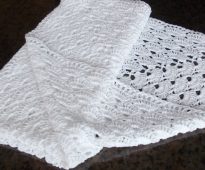 Yarn for baby blanket: tips on choosing
Yarn for baby blanket: tips on choosing
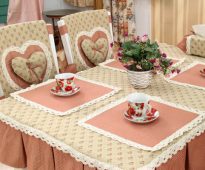 Which is better to choose fabric for tablecloths
Which is better to choose fabric for tablecloths
